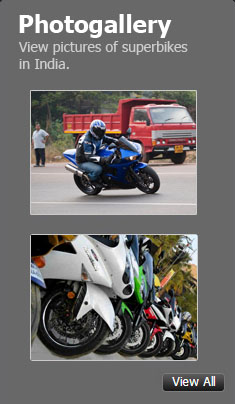News
A Close Look | Mahindra Bolero Neo
Mahindra is offering the Bolero Neo in three variants - N4 (Rs. 8.48 lakh), N8 (Rs. 9.48 lakh) & N10 (Rs. 10.00 lakh).
The Mahindra Bolero Neo has been launched in India at a price of between Rs. 8.48 - 10.00 lakhs (ex-showroom, Delhi).

Introduction
Think of the Bolero Neo as an improved TUV300. The TUV300 was actually a good car and in 'Plus' guise with that 2.2L mHawk under the hood, GTO commented that it was even superior to the Scorpio. But Mahindra botched the original launch of the TUV300 up with an under-powered engine, poor NVH, heavy steering & bouncy ride quality. Worse still, Mahindra introduced the AMT automatic before it even understood the new technology. The end result was a long line of infuriated TUV300 AMT customers who had to contend with awful reliability & breakdowns. The larger TUV300 Plus variant with the 2.2L mHawk was impressive, but it was too little, too late and was never marketed properly. The TUV300 ended up selling in mediocre 1,000 - 1,500 sales numbers every month.
Mahindra stopped selling the TUV300 since the introduction of the BS6 emission norms in April 2020. Now, the SUV has been relaunched with some updates and a new name - Bolero Neo. The trend of naming an upcoming product with a successful moniker is something we have been seeing recently. Ford named its new electric crossover the 'Mustang Mach-E' and Tata did the same with the new 'Safari', which is essentially a 7-seater Harrier. The 'Bolero' brand is enormously powerful, especially in rural & semi-urban areas. Whether this works or not depends on Mahindra's sales & marketing machinery.
The Bolero Neo gets the BS6-compliant version of the mHawk100 (100 BHP, 260 Nm) engine and 5-speed manual gearbox from the TUV300 facelift that was introduced in 2019. Mistake #1 already is not giving the awesome 2.2L mHawk to the Bolero Neo. A 3-cylinder 100 BHP motor is nothing to write home about, especially for such a heavy UV.
Mahindra Bolero Neo Price & Brochure
Mahindra is offering the Bolero Neo in three variants - N4 (Rs. 8.48 lakh), N8 (Rs. 9.48 lakh) & N10 (Rs. 10.00 lakh). There's an N10(O) variant as well, but its price hasn't been revealed as yet. Weird. The only additional feature on the optional variant is a Mechanical Locking Differential (MLD). You can download the Mahindra Bolero Neo brochure here.
Since the Mahindra TUV300 has already been reviewed by Team-BHP, this report will only focus on changes made to the Bolero Neo. To read the full review, click here.
Exterior
The Bolero Neo is based on Mahindra's third-generation platform that's shared with the Scorpio. It measures 3,995 mm in length, 1,795 mm in width and 1,817 mm in height with a wheelbase of 2,680 mm and a laden ground clearance of 160 mm. Overall build quality is as you would expect from a Mahindra. It feels sturdy and ready to take abuse:
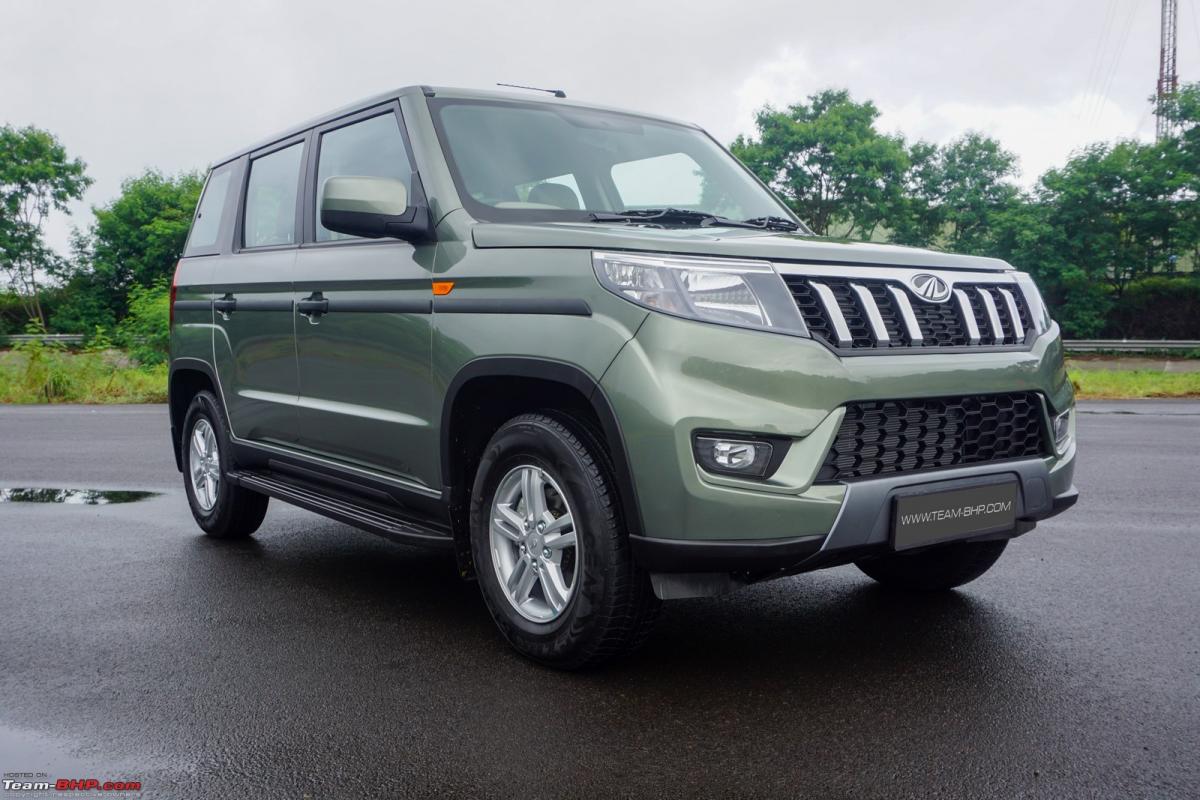
There have been quite a few changes made to the front end to help differentiate the Bolero Neo from the TUV300. Where the TUV300's 'battle tank inspired' design felt like it was trying too hard, the Bolero Neo feels fresher. You have a lot less body colour and the elements don't look oversized. The redesigned bumper gets more creases and also wear a faux skid plate at the bottom:
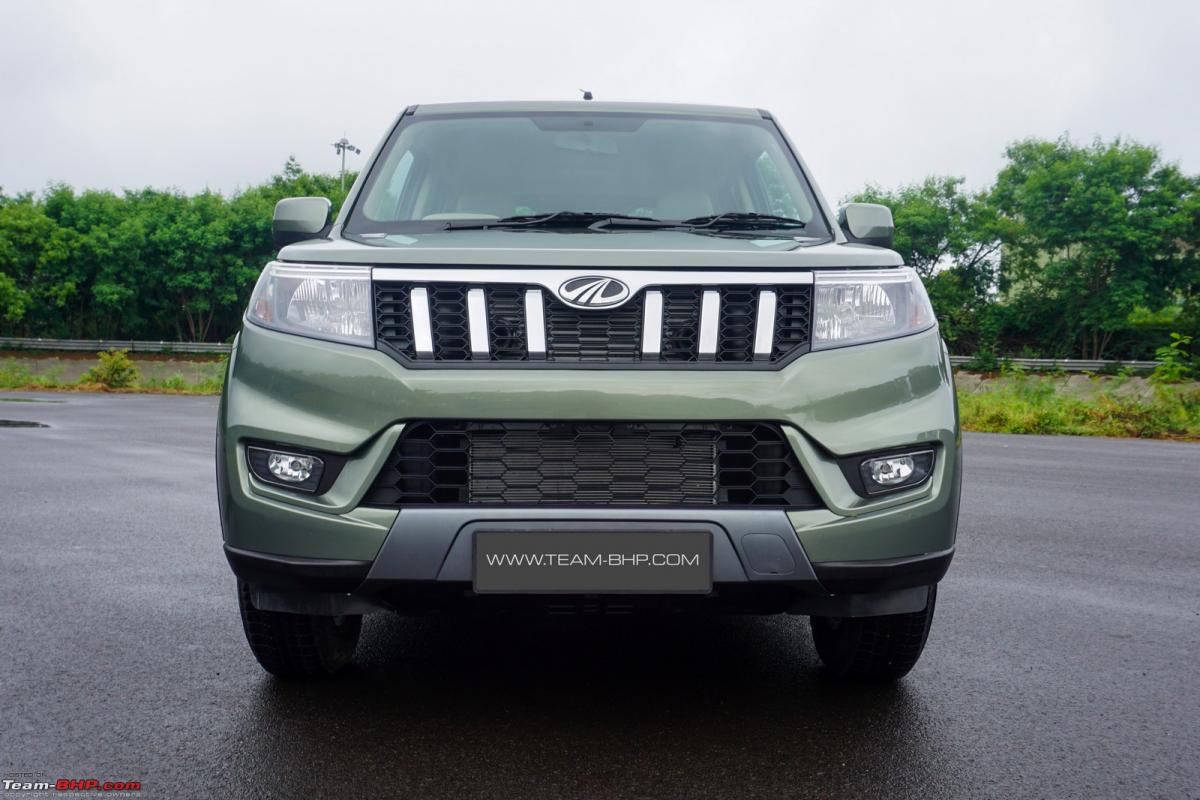
Being a body-on-frame Mahindra, the Bolero Neo is definitely on the heavier side. While most of the other compact SUVs weigh in the ~1.2-tonne range, the Bolero Neo has a kerb weight of 1,555 kg (N4 variant). The power-to-weight ratio is merely 65 BHP / ton (now you know why we want the option of the 2.2L mHawk like in the TUV300 Plus):

The rear is almost identical to the TUV300 except for the obvious Bolero Neo badging and some minor changes:
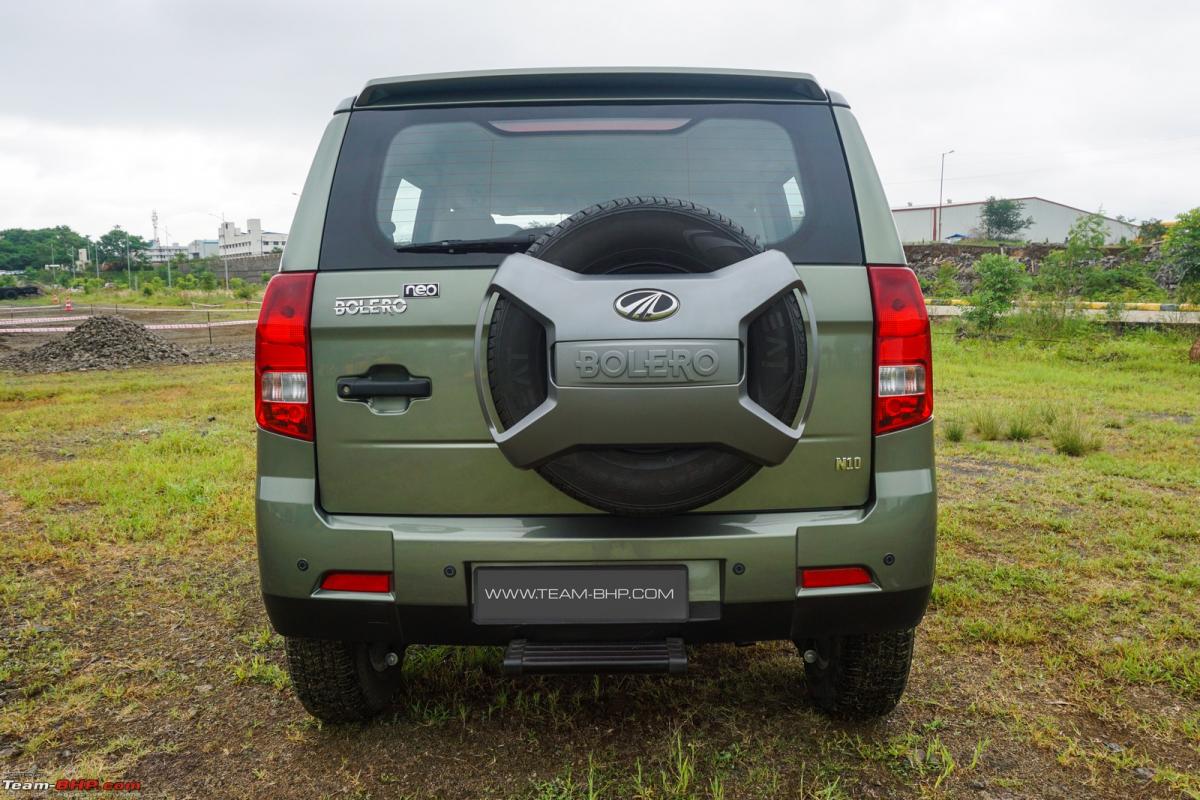
Black side strips have been a signature element of the Bolero, and now the Bolero Neo gets them too! C-pillar is finished in black, while the D-pillar is finished in the body colour - it was the other way round in the TUV300. The door handles are finished in black and plastic cladding around the wheel arches + sides enhances the car's rugged look:
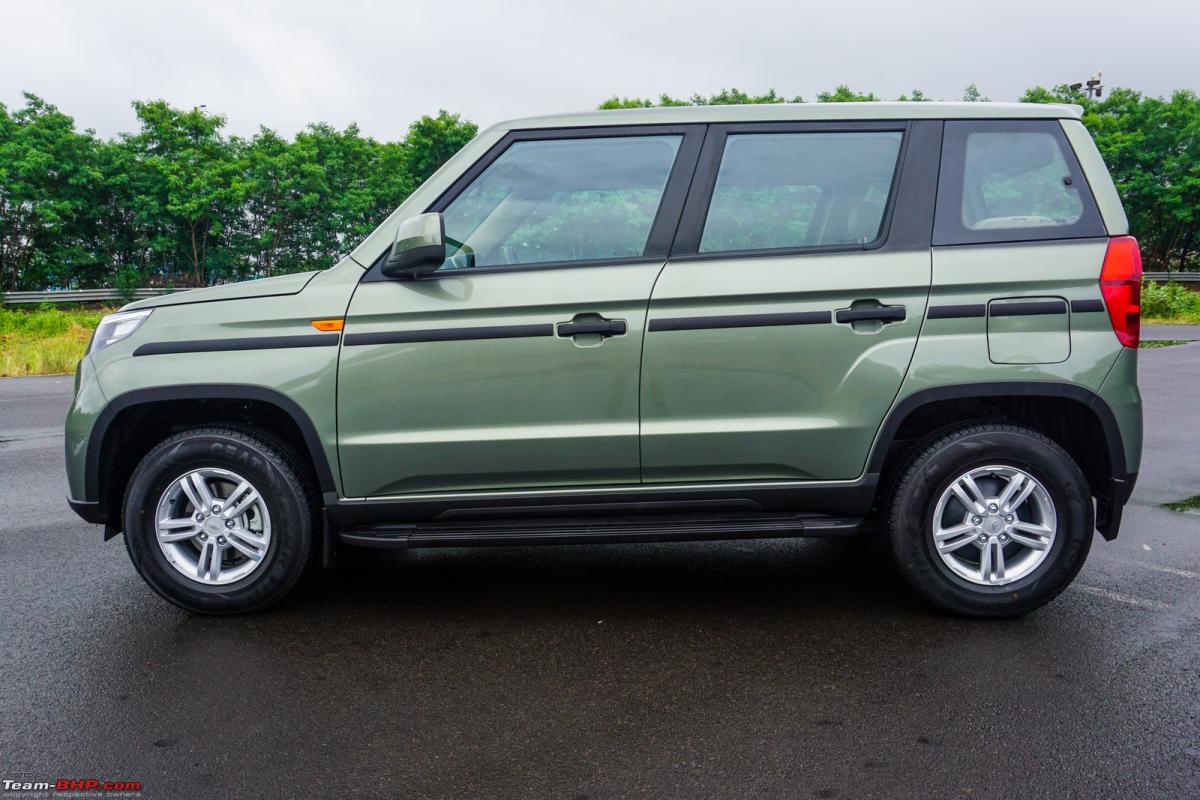
Sleeker headlamp clusters look well proportioned. They get DRL strips at the top and static bending lights:
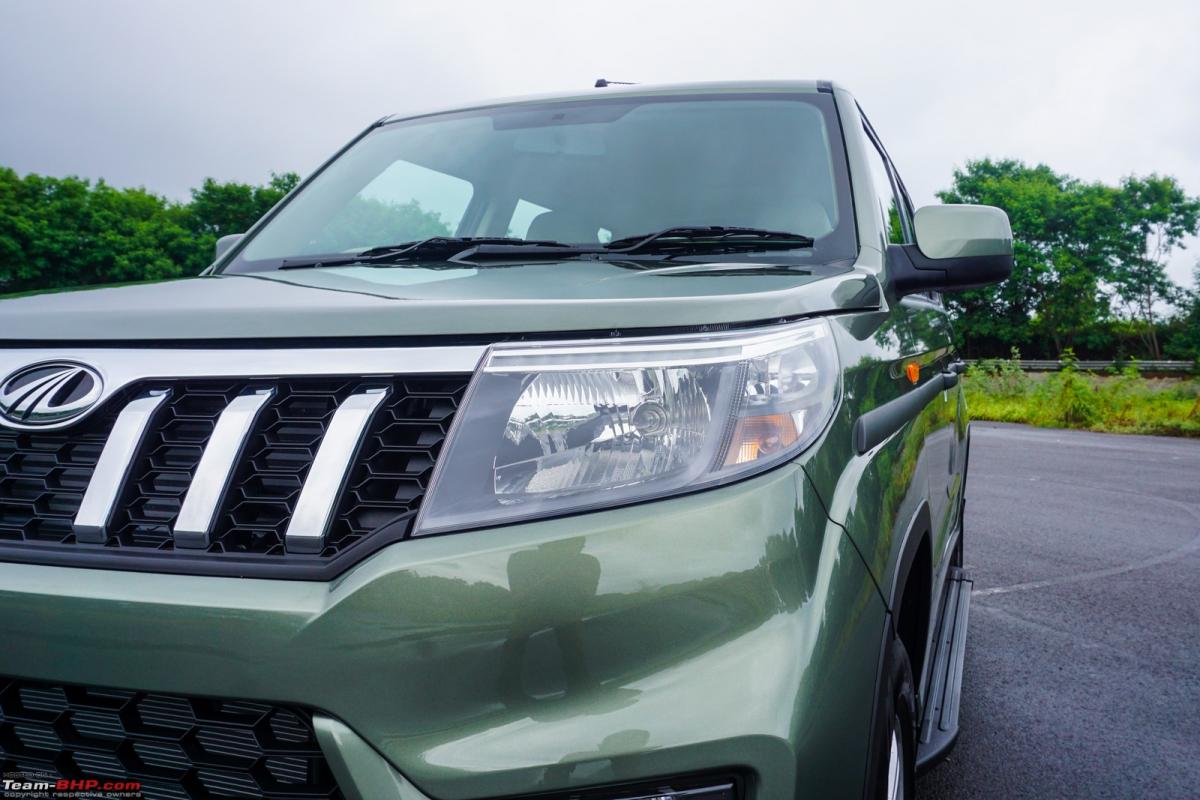
Bolero-like radiator grille sits in between the headlamps. It gets a honeycomb mesh pattern and 6 vertical chrome slats:
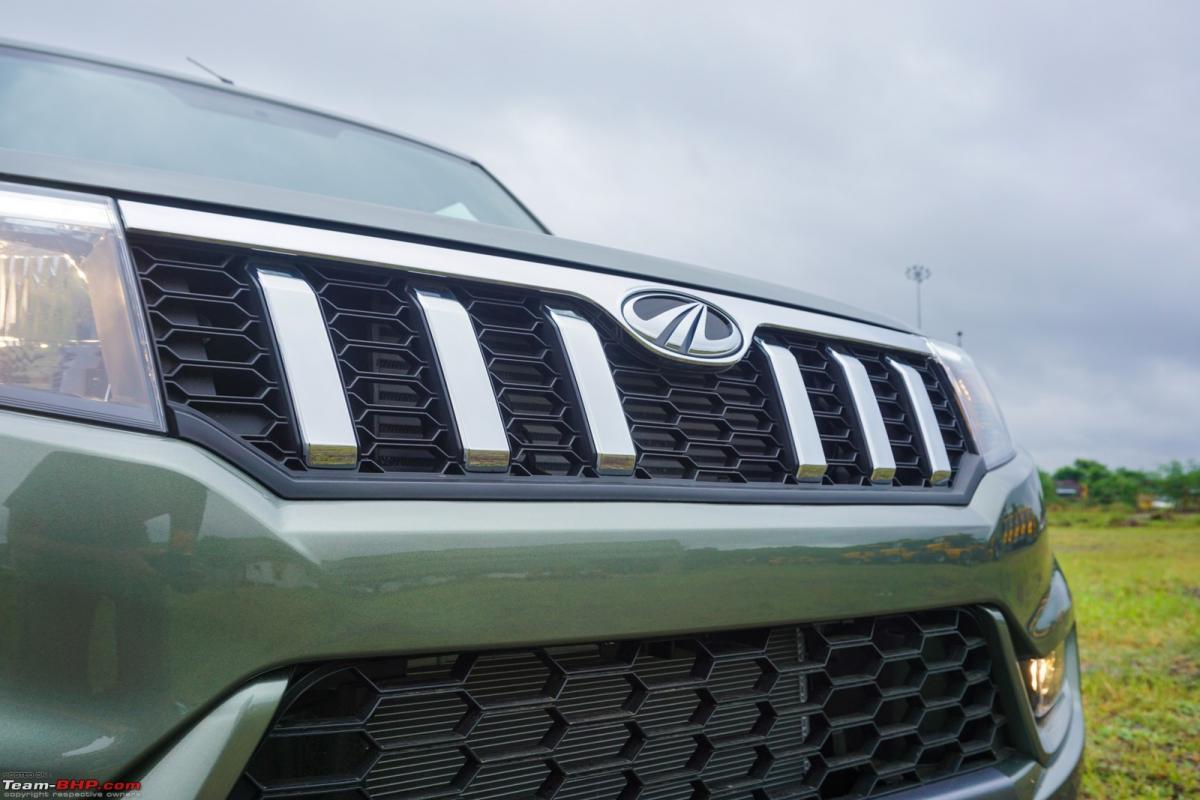
Gone are the big square fog lamps. Instead, you get these smaller oval units in black housings. There are a lot more design elements surrounding the fog lamps:

The big air dam at the bottom has a honeycomb mesh grille below which, there is a faux grey skid plate:

B & C-pillars are finished in black and you get this vinyl on the window line that adds a merging effect into the body colour. Looks cool from a distance, but the finishing could've been better:
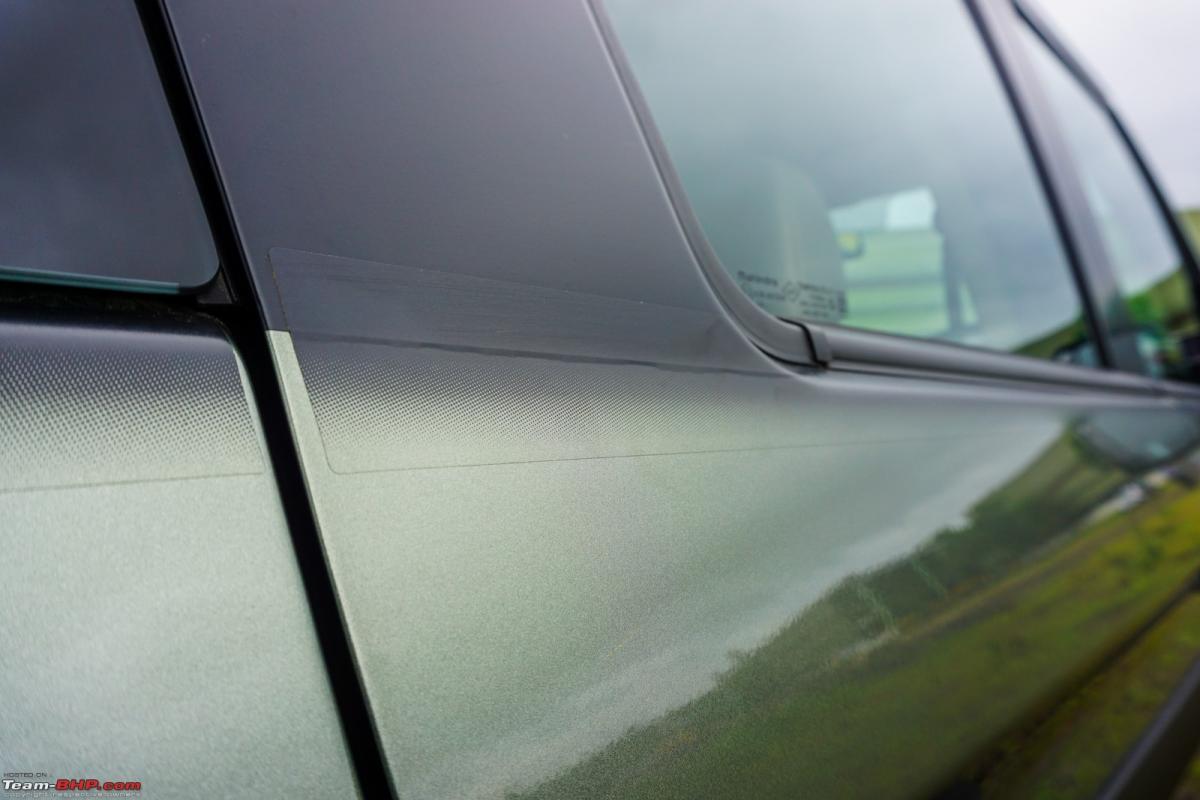
215/75 Ceat Czar tyres are retained. The 15-inch alloy wheels get a simpler design that looks better compared to the TUV300's original rims:
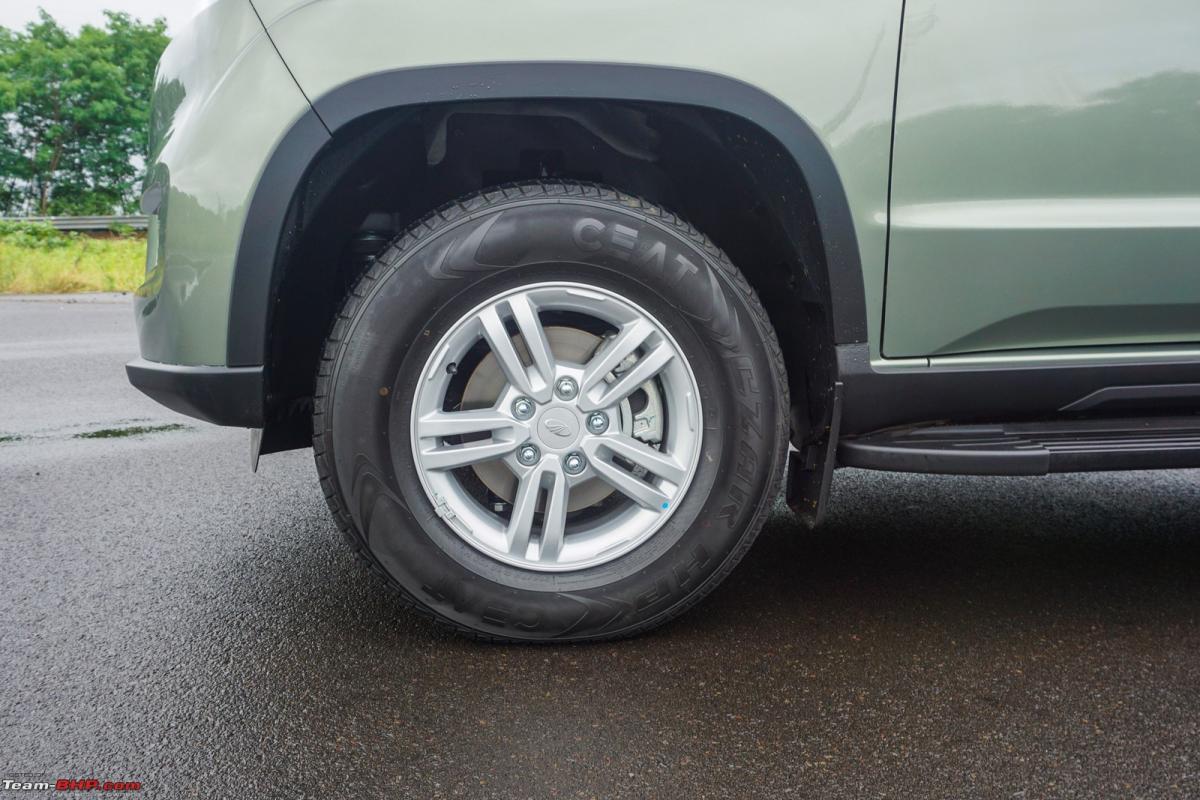
The roof is ribbed for added rigidity, but misses out on roof rails from the TUV300 (reference image):

N8 and N10 variants get a roof spoiler:

Tailgate-mounted spare wheel cover gets the mighty Bolero branding. Door handle is finished in black. 'Bolero Neo' badge sits in the top left corner of the tailgate; Neo means new or a modern version of something, so you know what Mahindra is hinting toward:
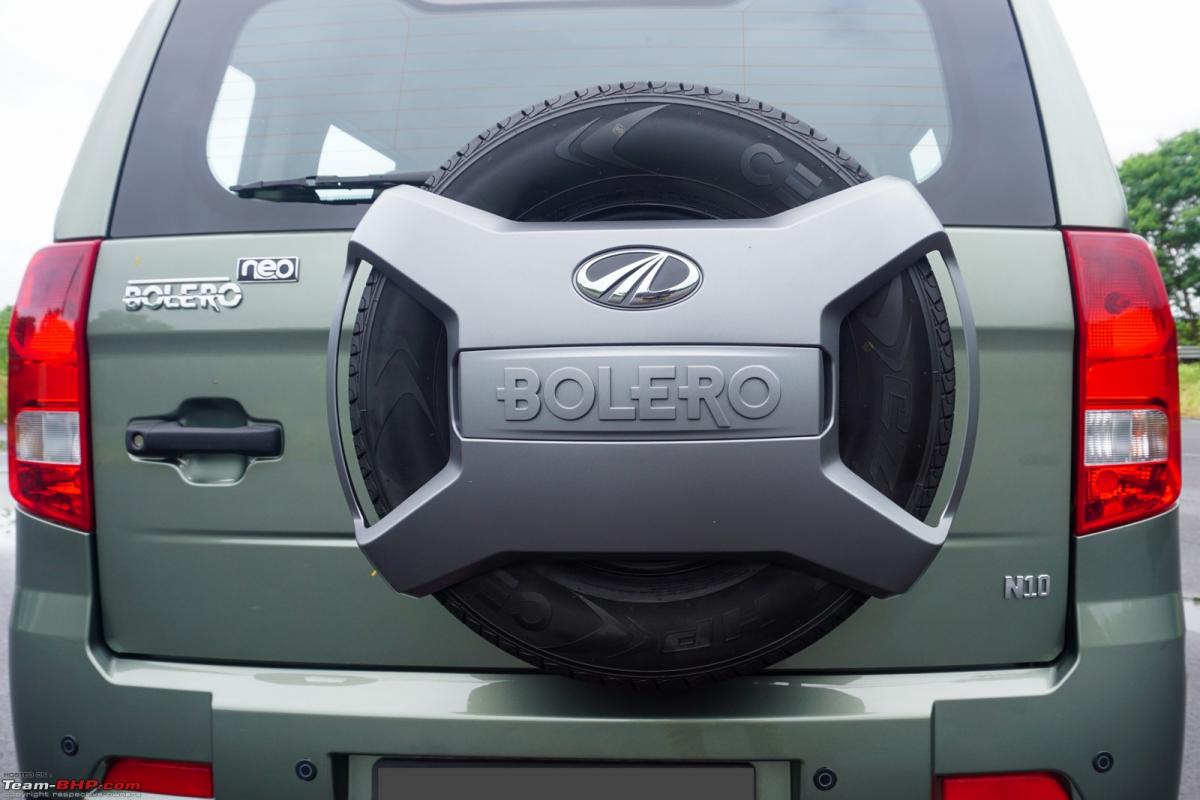
The lower part of the bumper is finished in black and the rear footstep is not foldable:
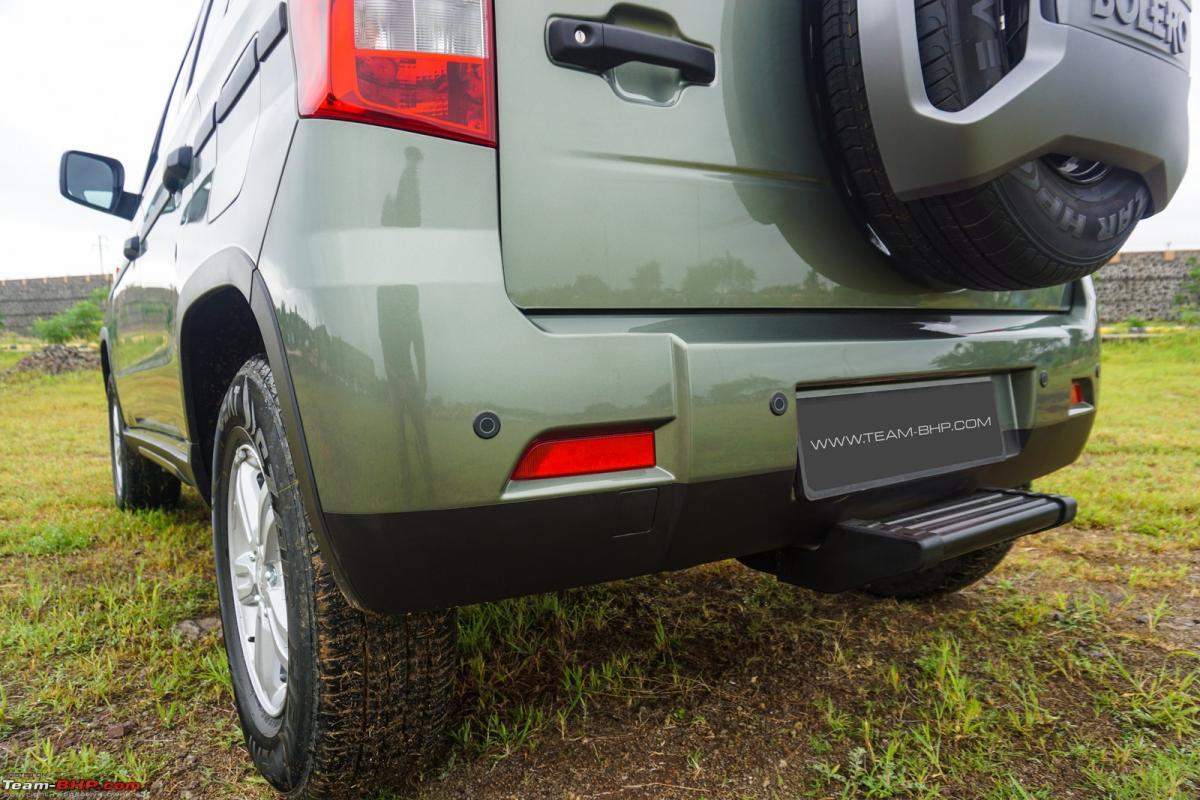
There are 2 shades of white available on the Bolero Neo - Diamond White (N4 & N8 variants) and Pearl White (N10 & N10(O) variants). The one in this picture is the Pearl White colour:

Apart from the white shade, the Bolero Neo is offered in Napoli Black, Highway Red, Rocky Beige (our test car) and Majestic Silver (below):
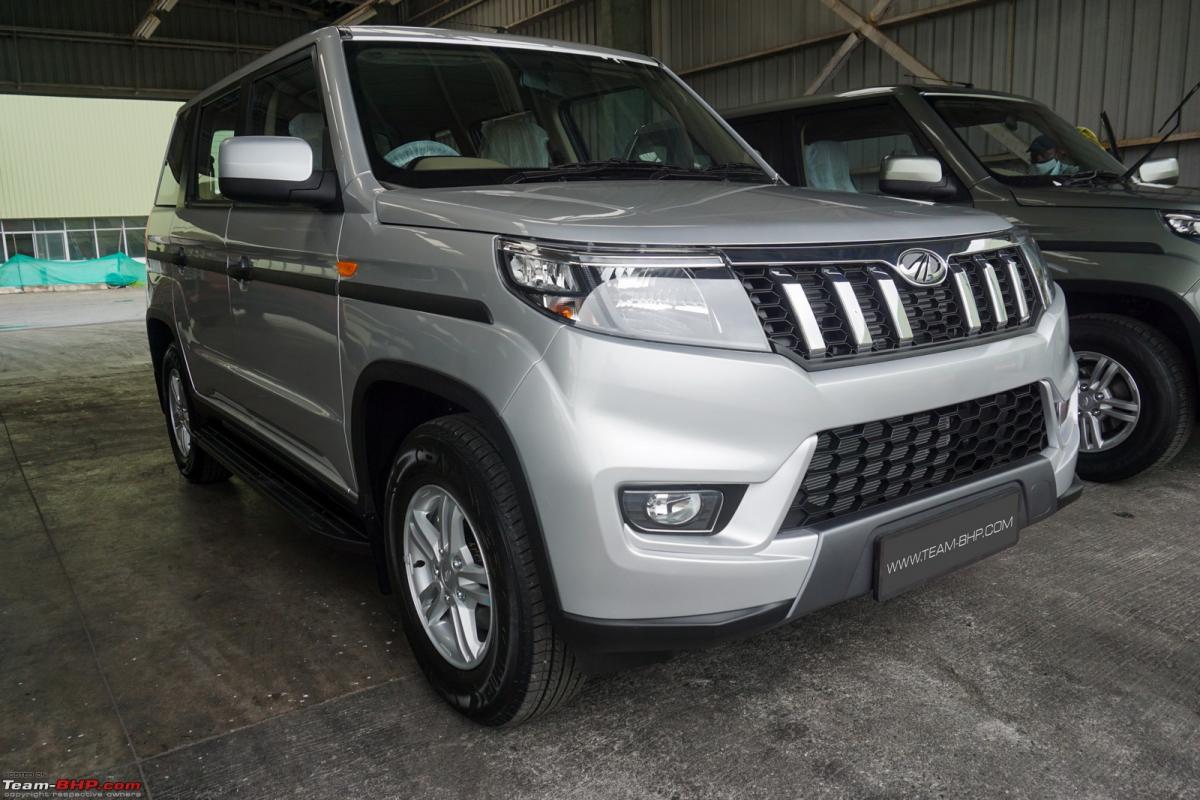
Interior
The cabin of the Bolero Neo is largely similar to that of the 2019 TUV300 facelift. The overall design is simple and straightforward. It looks pleasant & functional:

Steering wheel is identical in design to the outgoing car. Gets buttons to operate the cruise control on the right spoke:

One of the major changes on the inside is the new instrument cluster. The upmarket unit with chrome-ringed dials has been replaced by a simpler-looking cluster with a new MID.
MID is controlled via two stalks at the bottom and displays all the basic information such as an odometer, 2 trip meters, digital speedometer, system warnings, average fuel efficiency, etc. The display is clean and crisp and looks nicer than the previous version's calculator font (reference image):

7-inch touchscreen head-unit supports Mahindra's BlueSense App. However, Android Auto and Apple CarPlay are not supported! Disappointing:
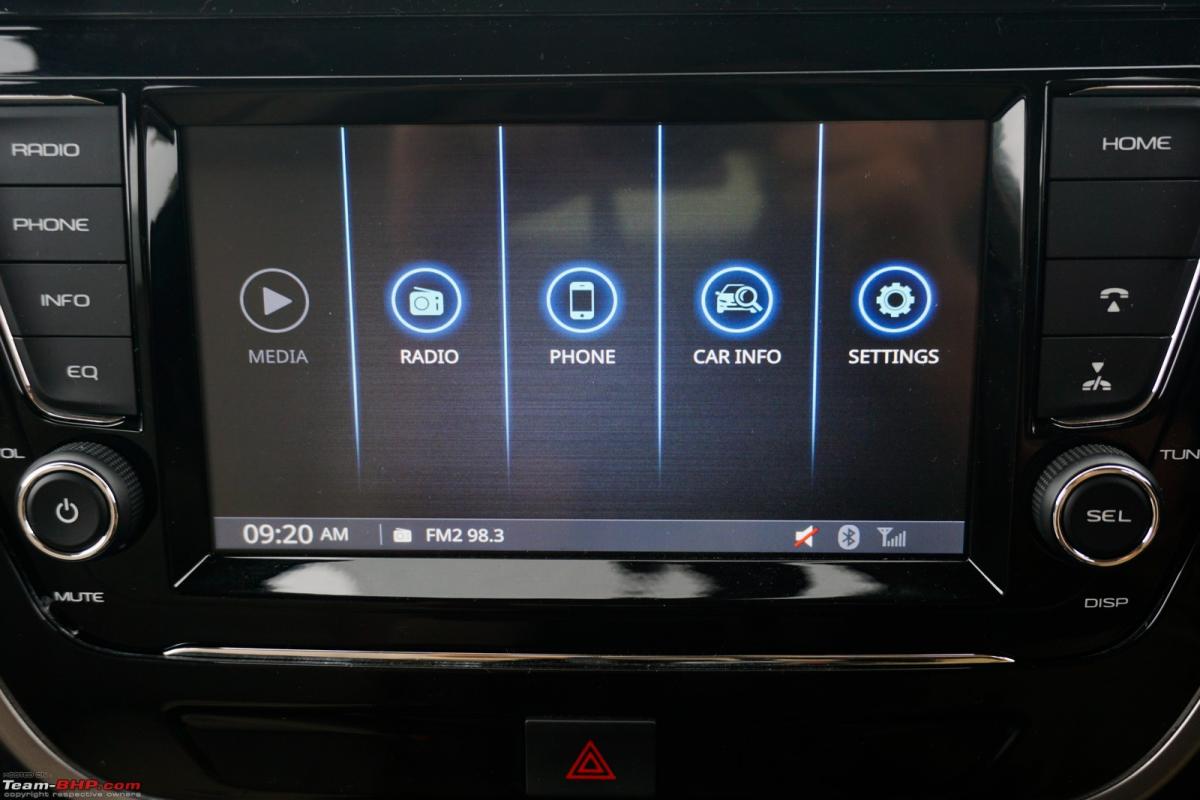
Mahindra offered leatherette seats on the TUV300 Plus and also the 2019 TUV300 facelift (reference image). But in the Bolero Neo, you get fabric seats that not only get soiled quite easily, but just don't feel that premium. Moreover, Mahindra has removed the manual lumbar support (reference image) and the under-seat storage (reference image) in the Bolero Neo:

The roof lamp is carried over from the TUV300, but there's a change in the design of the Bluetooth mic:

The flippy key looks premium and is shared with the Thar & Marazzo:

The rear bench is pretty much flat. Space is fair for a sub-4 meter vehicle:
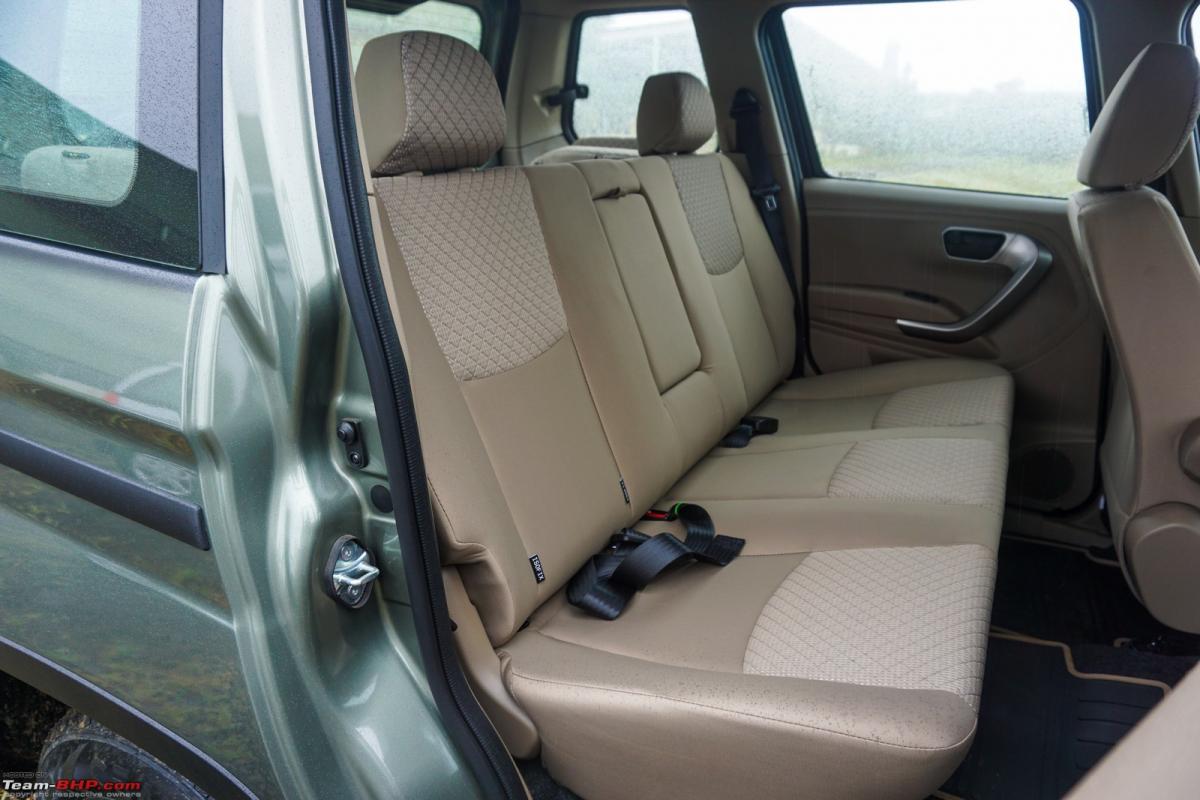
This is me (5'10" tall) seated behind my own driving position:
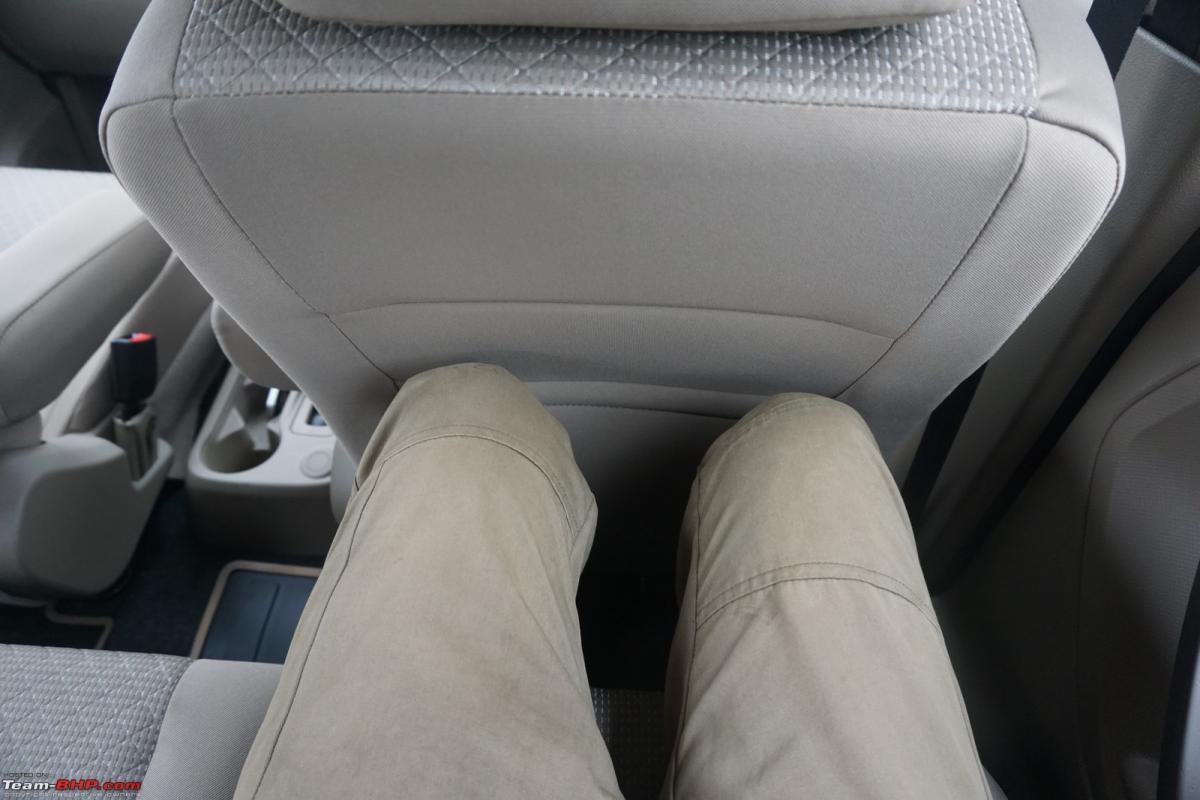
Only one child seat can be fitted on the rear seat bench:

The middle row gets this cheap-looking roof light. The TUV300 had a more upmarket unit (reference image):

Tailgate gets a low-budget cover on the inside. It loses the full cladding with the useful storage pockets + bottle holder from the TUV300 (reference image):

Instead, you get a simple seatback pocket behind the second row. The third row of seats is the same as before:
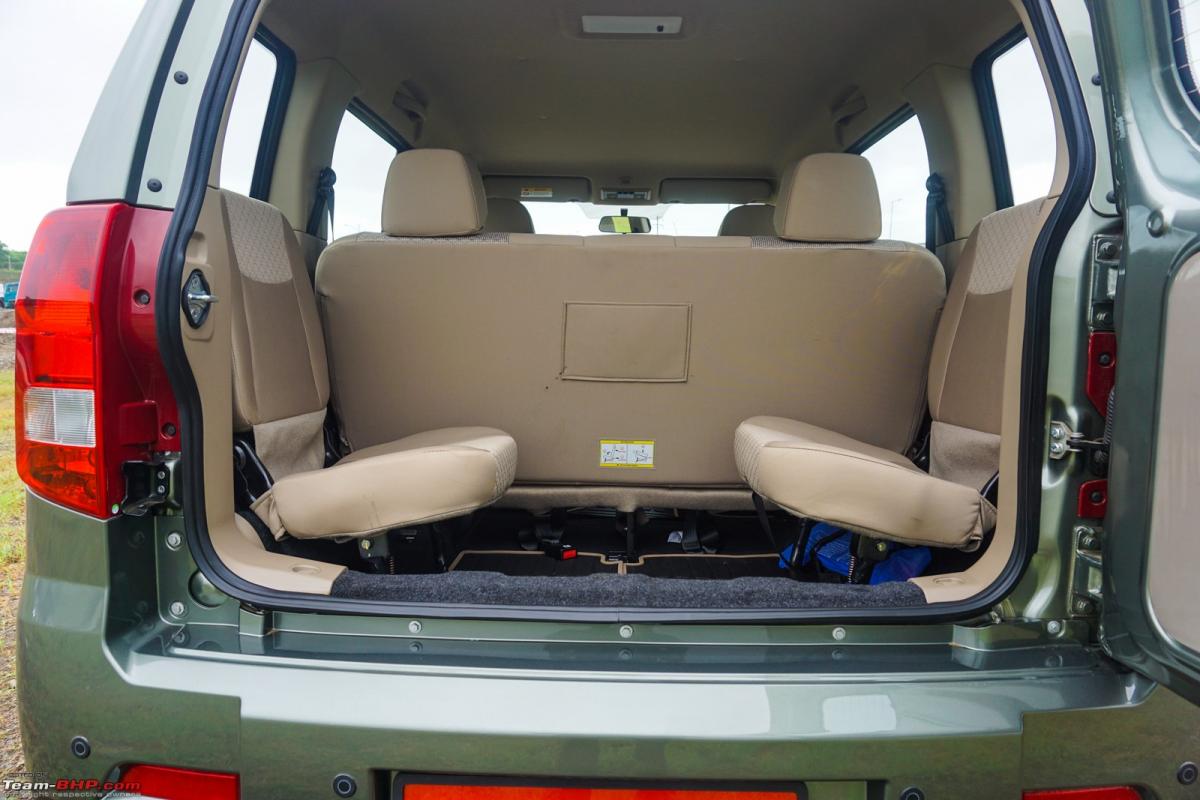





.jpg)



.jpg)













